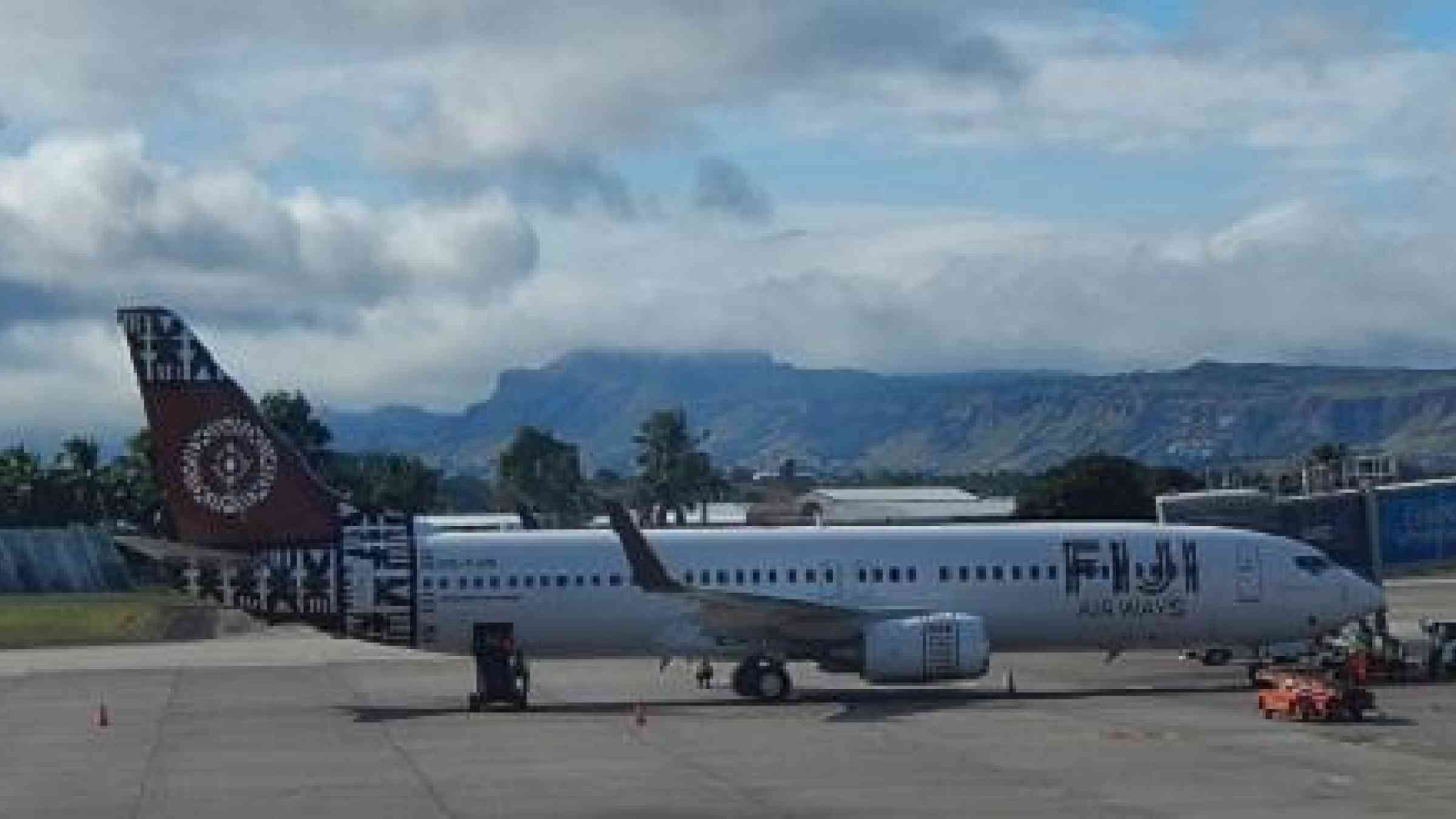
NADI, Fiji, 9 September 2015 – When floods closed Fiji’s main international airport for the only time in its history, economic shockwaves rippled through the tourism-dependent country.
Nadi airport, built in the 1940s, is Fiji’s gateway to the world and when Cyclone Evan forced it to suspend flights in 2012 the tourism industry as well as many other sectors took a big knock.
Senior Risk Manager at Airports Fiji Limited, Ms. Molly Murphy, said the experience revealed how much of an economic lifeline the airport was to Fiji and how its reliability was crucial to the country’s international reputation.
The Sendai Framework for Disaster Risk Reduction, adopted this year by the international community, has reducing disaster damage to critical infrastructure as one of its seven targets to strengthen sustainable development.
The Cyclone Evan disaster prompted Airports Fiji Limited to revisit its already extensive business continuity and contingency plans. Nothing was left unquestioned: Is there enough water on site? Are the current partnerships with the transport and tourism authorities good enough? Does the emergency airspace transfer agreement with New Zealand need updating? And so on.
One of the main findings was the importance of maintaining clear drainage systems, on and off site to prevent any further airport closures after future cyclones.
“There are three main elements that underpin our approach to risk management. First, have the right structure, the right people and the right reporting lines. Second, back this up with the right technology, up to date equipment and know-how. Third, systemize the collection of your data and use it to reveal trends and inform your decision making,” said Ms. Murphy.
“The Executive Chairman of our company, Mr Faiz Khan, has really encouraged staff to embrace a culture of safety in everything we do. We now have ownership of hazard risk by frontline personnel. This enables us to continually review risk and change the allocation of resources to manage that risk.”
Ms. Murphy was speaking at a two-day ‘Make Your Business Disaster Resilient’ workshop in Nadi. The forum steered 32 managers through a step-by-step review of their current approaches to disaster and climate risk management identifying strengths and gaps.
The managers came from a cross-section of the Fiji economy, including the Port Authority, various manufacturers, transport and logistics, tourism, banking, insurance and the Government’s taxation department.
Cyclone Evan caused USD40 million in direct economic costs. Indirect losses, such as business closures, reduced tourism numbers and job losses, are estimated to have been considerably higher. The cyclone affected 750,000 people, almost Fiji’s entire population.
The strengthening of Fiji’s infrastructure has emerged as a priority of government policy. “We have invested heavily to improve our infrastructure – ports, highways, communications, airports and hospitals,” Prime Minister, Voreqe Bainimarama, said in a recent interview with the Fiji Sun.
The ‘Make Your Business Disaster Resilient’ workshop was convened by the Fiji Employers and Commerce Association and facilitated by UNISDR’s Global Education and Training Institute, based in Incheon, Republic of Korea.
It is part of UNISDR’s increased engagement with the private sector, which is identified as a key partner in the implementation of the Sendai Framework.